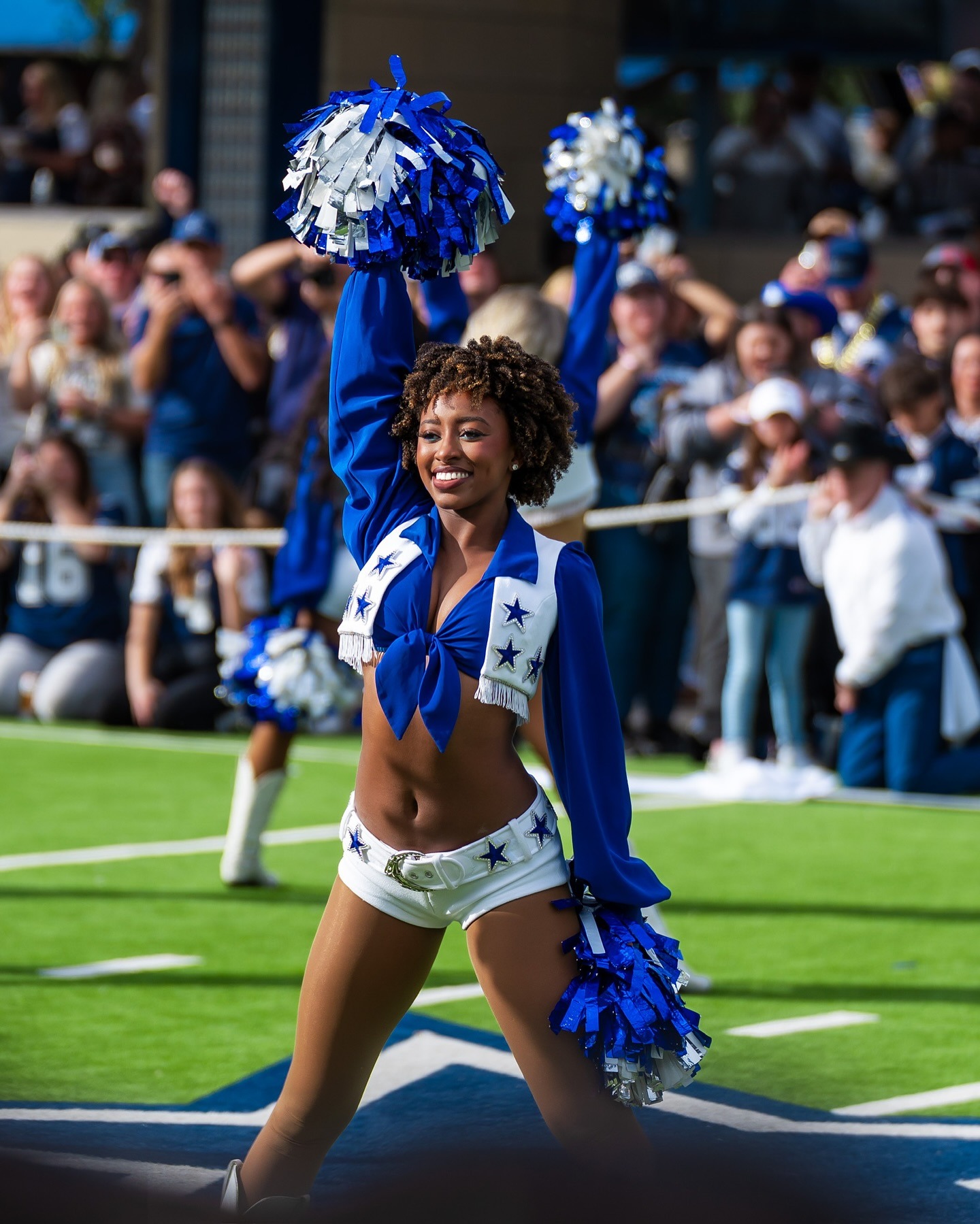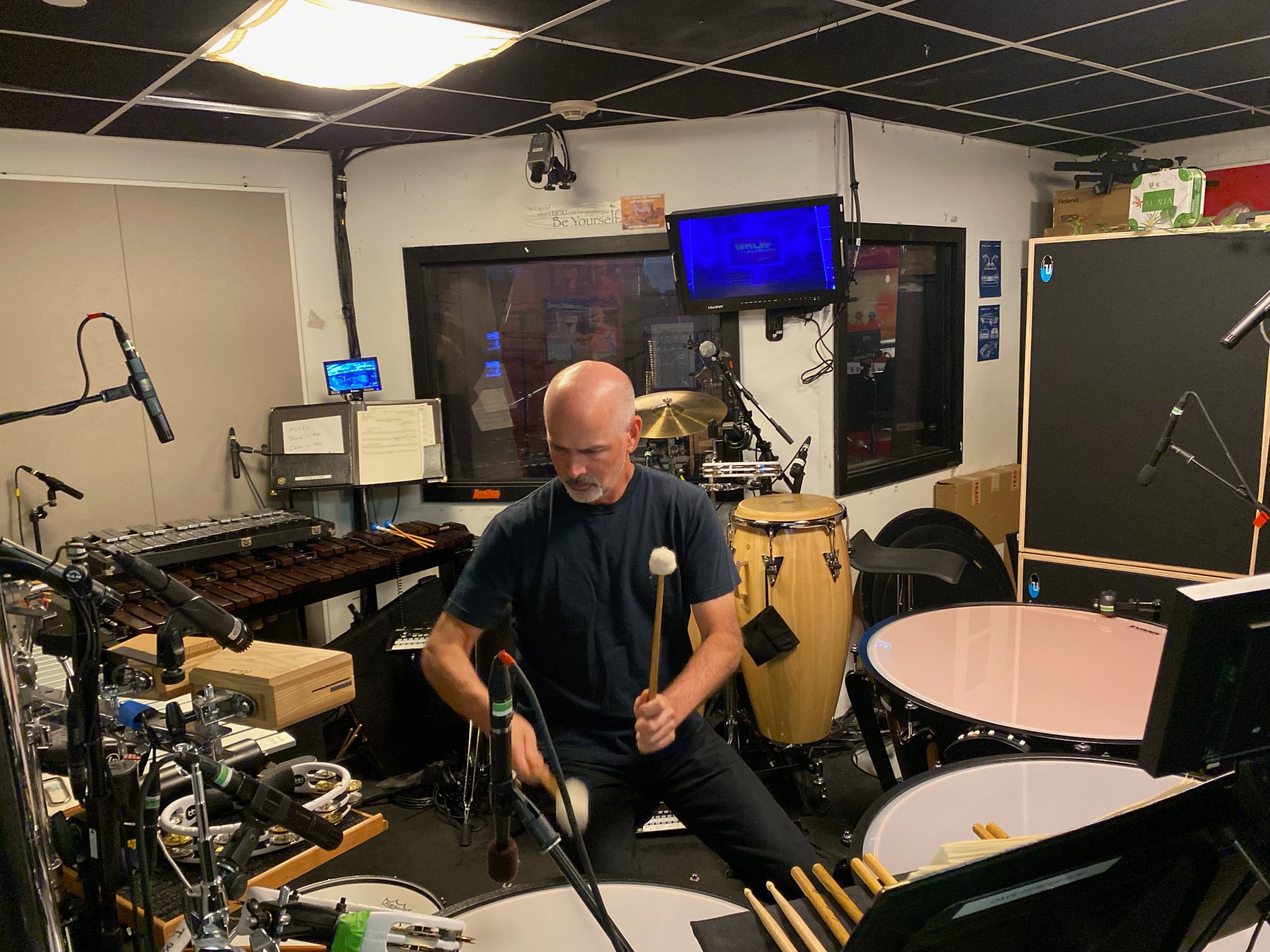They’re Doing the Jobs They Always Dreamed Of – Plus One Other
From the Dallas Cowboys to Broadway, it’s a nimble balance to pursue the career you’ve always dreamed of. Most world-class performers are still figuring it out.
By Sanvi Bangalore

Kally Bethea always knew she would be a Dallas Cowboys cheerleader. Captivated by their poise and work ethic when she watched CMT’s Making The Team in middle school, she envisioned herself sporting the royal blue uniform in the stadium. While there weren’t a lot of Dallas Cowboys cheerleaders on television with her race and hair texture, she knew the job was in her future.
DCC seemed like “the perfect world of being an ambassador and being able to dance while giving back to your community,” Bethea says.
An avid dancer and former pageant queen, cheering for Dallas Cowboys seemed like the ideal opportunity to flaunt her technical dance skills and public speaking capabilities. She went to a performing arts high school in Greenville, South Carolina before attending the University of Florida for her bachelor’s degree in dance.
After years of perfecting her jazz and contemporary dance styles and attending some DCC prep classes, she was one of the lucky 36 chosen for the team during her time auditioning.
Bethea wasn’t the only one intrigued by the cheerleader’s synchronized routines and perfect smiles. Millions of viewers tuned into America's Sweethearts on Netflix this summer, a 7-episode docuseries following the lives of the Dallas Cowboys cheerleaders. Across Reddit and other social-media forums, the show sparked anger, and questions. “These girls put their bodies thru so much for so little monetary gain,” wrote one Reddit user. “Surely they could get paid better than a fast food worker?” Another wrote: ”They all seemed talented & kind yet brainwashed.”
Bethea balanced a full-time preschool teaching career while she worked with the organization.
After waking up at 6:30 a.m, she would rush over to her preschool class to teach from 8 a.m. to 3 p.m. Her lunch break would be spent lesson planning, in parent-teacher conferences, or learning Dallas Cowboys cheerleading choreography from her phone. She would take a short nap after school, to then put on a full face of makeup and head over to practice around 6 p.m. After several hours of cheering, she’d get home at 11 p.m. to then shower, eat dinner, and crash in bed to repeat the next day.
“It was very exhausting, but it had to be done financially,” Bethea says.
Dallas Cowboys cheerleaders are paid individually for each game, practice and appearance they attend. Games and practices are mandatory, but committing yourself to more appearances provides greater opportunity to earn more, she says. Still, the cheerleaders can earn only around $10,000 to $20,000 a year, according to Bethea. The Dallas Cowboys refused to disclose cheerleader pay upon request.
The cost to be a Dallas Cowboys cheerleader is higher than you might think. While the cheerleaders do receive sponsorships from partner cosmetic and tanning companies, they are primarily responsible for doing their own makeup everyday and paying for services that aren’t covered through the NFL. Bethea spent $1500 on makeup in one season, $80 every other week for her nails and about $400 every time she got her hair done because couldn’t find a company sponsor that worked for her curly hair texture. She received a free syringe of Botox for the year and a complimentary membership at the team’s fitness center.
Bethea spent about two years with the organization, starting in 2022 and ended her time with the company this May. While grateful for the opportunity and the lifelong friends she made, cheering with organization took a major toll on her mental health. Her mom would call, and worry about her anxious energy on the phone. “I can tell you haven't slept,” she would tell Bethea. “I call you and you're not in the best attitude.”
Katherine Puryear, a former Dallas Cowboys cheerleader, pursued every appearance with the organization she could book to make extra money. She cheered with the Dallas Cowboys from 2019 to 2023, simultaneously juggling various part-time jobs as a nanny, realtor, and an administrator at a surgery clinic.
Before practice one day, Puryear walked into the cafeteria within the Dallas Cowboys training facility, where all Dallas Cowboys full-time employees are permitted to get free food. A staff member stopped her saying cheerleaders weren’t allowed into the cafeteria and gestured to a nearby plaza with restaurants.
“I don't want to go pay to go get food when I can get it for free down here,” Puryear says. When she confronted human resources, she learned that cheerleaders were allowed to eat for free in the cafeteria but under certain conditions. They can’t look “unkempt” in the facility and must wear their Cowboys attire or at least a full face of makeup.
The older DCC coaches weren’t allowed to eat in the cafeteria when they were cheerleaders in the 80’s, Puryear says. “They didn't have that,” she says. “They kind of look at it as, well, you can't have it either.”

Betting on Broadway
Broadway percussionist Dave Roth always dreamed of making it in the music world. One of six siblings and his mother being a church choir director, he grew up singing the Broadway rendition of Jesus Christ Superstar with his family. As a high schooler, he aspired to play film scores for his favorite composers like John Williams and Alan Silvestri.
Forty years later, Roth is now the lead percussionist for Back to the Future on Broadway, a musical written by Silvestri. Roth was starstruck interacting with the prominent composer in rehearsals leading up to opening night.
“He's been with us every single second,” Roth says. “It’s a real thrill.”
But it took him 25 years playing on Broadway to get there, he says. After graduating from Northwestern University with a master’s degree in music performance, he freelanced in Chicago, San Antonio and Baltimore for several years before stepping into the musical theater world. He got his start in the Theater District by “subbing” on various shows, essentially filling in for the tenured, or “chair-holding” players on short notice. Earning a Broadway chair came after years of uncertainty juggling random gigs and taking every opportunity to play. But even after earning a tenured position playing for a Broadway show, Roth still didn’t achieve the stable income he desired out of fear that his Broadway show would close. Living in an apartment in Queens, he was able to pay for his necessities, but was not making enough to grow his savings for the healthcare and travel he desired to afford in retirement.
“It’s dog-eat-dog,” Roth says. “It’s a continual struggle.”
There was pressure to say yes to any and every musical gig that came his way while seeking out potential students to teach privately for extra income. Except for the few exceptions like Wicked or The Lion King, most Broadway shows only last six to nine months, he says. Most of the shows he had played like Saturday Night Fever and Hairspray would last a couple months through the Christmas season, and then be nixed in January. A new Broadway show would pop up around March, and his commitments would start in April or May.
He found that light period from January to April miraculously lined up with tax season, making it the perfect side business to pursue alongside his music career.
“I always say death, taxes and Broadway shows closing are the three constants of life,” Roth says.
Disgruntled by the uncertainty of his Broadway shows lasting, fifteen years ago Roth decided to channel his interests in tax law and personal finance and start his own financing planning firm, where he helps over 425 clients prepare their tax forms. The job provides him the stable, full-time annual income that was unattainable from his music career. His mental health improved since starting his business, and says it’s a job he can count on far into the future. After all, doing taxes at a desk is certainly easier on the joints than banging on various drum and mallet instruments.
“There may be a day where music is harder for me to do,” Roth says. “It's a very physical thing.”
“Paid to sit at the best seat in the house”
Cory Matthews, 45, always loved basketball, but didn’t necessarily think he was good enough to play professionally himself. After getting his master’s in sports industry management from Georgetown University, he eventually found his way to the NBA after years of working collegiate-level games while simultaneously pursuing a career in education on the side.
“I did not go to school to become a teacher at all,” Matthews says. He grew passionate about working with the youth in the D.C. area, and is now the sports department chair at his local public high school, making $110,000 a year to support his three kids.
Matthews works courtside for WNBA and NBA sports games part-time from 6pm to 9:30pm after school, three days a week. The hours are too sporadic to provide stable income, making the earning potential too low to ever be a full-time job. Matthews is paid for each game he works, which amounts to about $10,000 to $12,000 a year.
“Because it was my dream job I never looked at the tag,” Matthews says. “I get paid to sit at the best seat in the house.”
He went from manning the grill at the concession stand at Georgetown basketball and lacrosse games to eventually working as a “timeout coordinator” for ESPN, where he made sure the game was timed to the NBC and Fox News programming. Through this position he learned how to keep track of the stats and scoring during a game, and he applied those skills through gigs with local universities and eventually the WNBA and NBA. His favorite part? All-expenses-paid opportunities to travel to Brazil, London, and most recently Japan last year with the Washington Wizards.
“The dream is to be that close to the game and to not have an expiration date,” Matthews says. He would have had a short shelf life as an athlete but he sees himself working behind-the-scenes in professional basketball till he’s 100 years old.
Post a comment